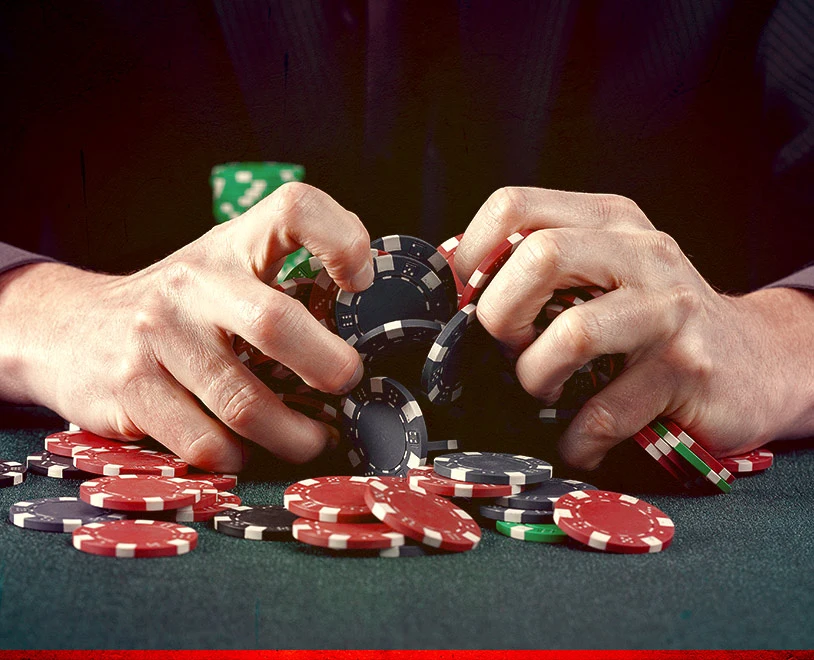Have you ever had one of those days where your brain just misfires? You told yourself you were going to do one thing, and you wound up doing the complete opposite – maybe you put the clothes in the dryer first instead of the washer, or you turned right on Electric Avenue when you meant to take Easy Street. It happens to all of us. And as you may have noticed, it happens quite a lot at the poker table.
The “it” we’re talking about here is a little something we call tilt. Dealing with tilt in poker is absolutely essential if you want to succeed at this game; you can have the greatest poker strategy in the world, but if you fail to execute that strategy, you’ll be lighting money on fire. The following tips and tricks for beating tilt in poker might be the most important pieces of advice you’ll ever receive. Let’s start by identifying the irksome devil that has brought down so many aspiring poker players.

What is Tilt in Poker?
If you’re a poker player of a certain age, you might remember going to the arcade and playing the pinball machines. It turns out you can influence the path of the ball somewhat by nudging these machines, so they built in a feature that would shut down the game and forfeit your turn if you shook the machine too violently. This was the tilt feature.
The poker version of tilt is much the same, except the pinball machine is you. When people try to define exactly what is poker tilt, they often talk about the symptoms of tilt, or perhaps the different triggers that lead to this state of brain-lock. We’ll talk about those, too, because they’re very important, but first, let’s pop open the hood and take a look at the engine itself.
The brain is a heck of a thing. It’s the CPU of your nervous system, sending signals to the rest of your body that tell it to move in a certain way. When those signals don’t reach their intended targets, the desired movement doesn’t happen. Psychologists are always discovering new things about this process, but as a poker player, this is pretty much everything you need to know about tilt itself. The next step is recognizing what it does to you.
What are the Effects of Tilt?
When you play online poker, you’re making a series of decisions: bet, raise, check, call, fold, and how much to bet/raise. You’re also looking ahead to future decisions on later streets, and you’re taking in the information around you to help you make better decisions, like what cards you have and what style of poker your opponents are playing. That’s a lot of stuff for your brain to process.
Tilt makes it more difficult for you to complete that process. You might lose focus and click “Call” when you meant to click “Fold” instead. You might run out of time trying to decide your bet size, and end up going all-in when a smaller bet would have done the job. You might even miss a hand completely without even realizing it. The list of potential mistakes when you’re on tilt is almost endless.

Poker Tilt Triggers
The next step in tilt management is pinning down the factors that prevent those signals your brain is sending from reaching their destination. The first and most obvious culprit is a lack of energy. Your brain literally requires fuel to carry out these electrochemical processes, so if you don’t eat, you’re more prone to go on tilt. More and more of the world’s top poker players are paying very close attention to their diets to make sure they’re getting enough calories from the right sources at the right time.
Next on our list of suspects: sleep, or lack thereof. The brain requires adequate sleep in order to function properly. Too much sleep can be detrimental, but it seems that athletes in general – including those who play mind sports – need more sleep than most people. We’ve all heard about poker players putting in ridiculously long sessions at the tables; this isn’t something to brag about. It’s bad for your poker, and it’s even worse for your brain.
The third member of our “Big Three” tilt causes is lack of exercise. If your body doesn’t move around, your blood flow becomes restricted and your brain doesn’t receive as much oxygen, decreasing its capacity for sending out those important signals. This is especially problematic for poker players. When you’re at the tables, or even when you’re studying, you’re probably sitting down most of the time. No doubt you’ve found yourself staring glassy-eyed at your computer screen on more than one occasion.
These three tilt factors are universal, but in theory, you might have something else going on inside you that’s impeding these brain signals. Focus-robbing conditions like ADD and ADHD can affect the pathways those signals take; these conditions seem to be more prevalent as you move up the poker ladder. You also might have some cardiac issues that cause your heart to race in pressure situations, prompting you to avoid getting into those situations at the table – even if your poker strategy tells you otherwise.
Then you have the external factors behind tilt. There are only so many things your brain can pay attention to at one time. Anything that distracts you from the task at hand can be a source of tilt, whether it’s somebody trying to text you, or a show on Netflix while you’re playing. Even if you’re completely focused on poker, if you multi-table and play too many games at the same time, you’ll overload your brain and put yourself on tilt.
Spotting the Signs of Poker Tilt
You may have noticed that we haven’t talked about emotions yet. The classic stereotype of the tilted player is someone who goes on “rage tilt,” slamming their mouse in frustration and calling off their entire stack with Ace-High, just because their opponent beat them in the previous hand. Then they go completely mental when said opponent has the nuts, and they punt off several more stacks before hurling their laptop at the wall.
Rage tilt is obviously a problem, but making emotionally-based decisions is more of a symptom of tilt than a cause. Ideally, when you’re sitting at the poker table, you’ll be in an emotionally centered state: relaxed, yet attentive. Anytime you find yourself creeping away from that center, you’re going on tilt. Learn to spot these warning signs as soon as they come up, whether it’s rage, sadness, boredom, or even too much happiness after a big score. Be extra-vigilant when the inevitable bad beat occurs, or you go on an extended run of poor starting hands.

How to Avoid Getting Tilted
The best way to control poker tilt is to prevent it from happening in the first place. Stopping those “Big Three” tilt triggers is the most important thing you can do to become a better poker player, far more important than any strategy you can learn. Unfortunately, diet, exercise and proper sleep management are also some of the hardest things to get right. Even the best poker players can find themselves unable to resist a bacon double cheeseburger, or sitting on the couch binge-watching TV.
If you’re not about to change these habits for the better, at least try to set up your poker “workstation” to make it as distraction-free as possible. Turn off your phone if possible. Hopefully whoever it is trying to contact you can wait until the end of your session.
Speaking of your sessions, be kind to your brain and accept the fact that there’s only so much it can handle. Cash game sessions should be capped at somewhere around 60-90 minutes, with 30-minute breaks or longer in between so you can refresh. If you’re playing tournaments, use that 5-minute break to reset mentally and physically; get away from the monitor, stretch a bit, and eat and drink something. Don’t drain your brain.
Best Remedies When Tilted
Even if you’re a calm person, you’re going to lose it every once in a while. When you recognize that you’re on tilt, end your session immediately if you’re at the cash tables; establishing a stop-loss of two buy-ins will also help you in times of tilt. If you’re playing in a tournament, go into recovery mode and sit out an orbit or two while you get yourself together. Find a quiet place, take a few deep breaths, and come back to the table when you’re ready. Then play a basic, ABC strategy with as little thinking required as possible to get you through the rest of the tournament. Once it’s over, step away from the table and come back another day.
If you want to learn more about overcoming tilt at the poker table, you can study things like ultradian and circadian rhythms, and you can always take a deeper dive into psychology, kinesiology, nutrition, sleep science and other related subjects. But for now, you have the fundamentals you need to identify tilt and stop it in its tracks. Use these basic concepts to stay on your A-game as much as possible when you’re playing poker – and when you’re away from the tables, too.
